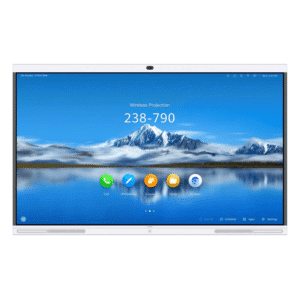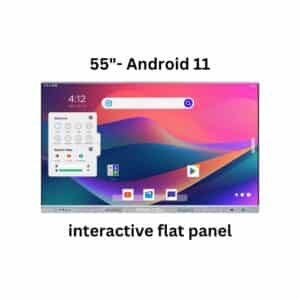In today’s tech-driven world, education needs to evolve to keep pace with the changing needs of students. Interactive display whiteboards (IDWBs) are emerging as powerful tools that are transforming learning environments in schools and colleges around the globe.

What are Interactive Display Whiteboards?
Interactive display whiteboards are large touch-sensitive screens that combine the functionality of a traditional whiteboard with the power of a computer. They allow teachers and students to collaborate, interact with digital content, and learn in a more engaging and dynamic way.
Benefits of Interactive Display Whiteboards for Schools and Colleges:
- Enhanced Engagement: IDWBs turn passive learning into an active experience. Students can manipulate images, annotate documents, and participate in interactive activities, leading to a deeper understanding of concepts.
- Improved Collaboration: IDWBs facilitate collaboration among students and teachers. They can work together on projects, share ideas, and provide instant feedback.
- Accessibility for All Learners: IDWBs offer a wealth of features that cater to diverse learning styles and needs. They can include tools for visual, auditory, and kinesthetic learners, making education more inclusive and accessible.
- Interactive Content: IDWBs allow teachers to access and display a vast library of interactive content, including educational videos, simulations, and games. This makes learning more engaging and fun for students.
- Increased Efficiency: IDWBs save time and resources. Teachers can prepare and deliver lessons more efficiently, and students can access notes and materials instantly.
- Cloud-Based Applications: Many IDWBs offer access to cloud-based applications and platforms that allow for real-time collaboration and sharing of resources.
- Digital Assessment: IDWBs can be used for digital assessments, providing immediate feedback and data for teachers to track student progress.
- Improved Communication: IDWBs can be used to connect with parents and other stakeholders, providing updates and showcasing student work.
Factors to Consider when Choosing an Interactive Display Whiteboard:
- Size: Choose a size that is appropriate for the classroom or learning space.
- Resolution: Higher resolution provides a clearer and sharper image.
- Touch Technology: Consider the number of touch points supported and the responsiveness of the touch screen.
- Connectivity: Ensure the IDWB has the necessary ports and connectivity options to connect to other devices and the internet.
- Software: Choose an IDWB that comes with user-friendly software and offers a wide range of features and applications.
- Warranty and Support: Choose a brand with a good reputation and offers a comprehensive warranty and support services.
Conclusion:
Interactive display whiteboards are powerful tools that can revolutionize education in schools and colleges. By providing a more engaging, interactive, and collaborative learning environment, IDWBs can help students achieve their full potential.









Leave a reply